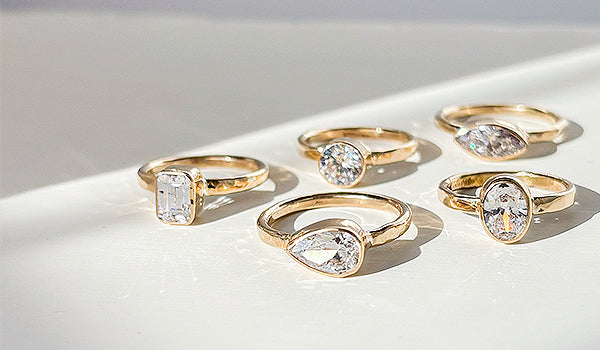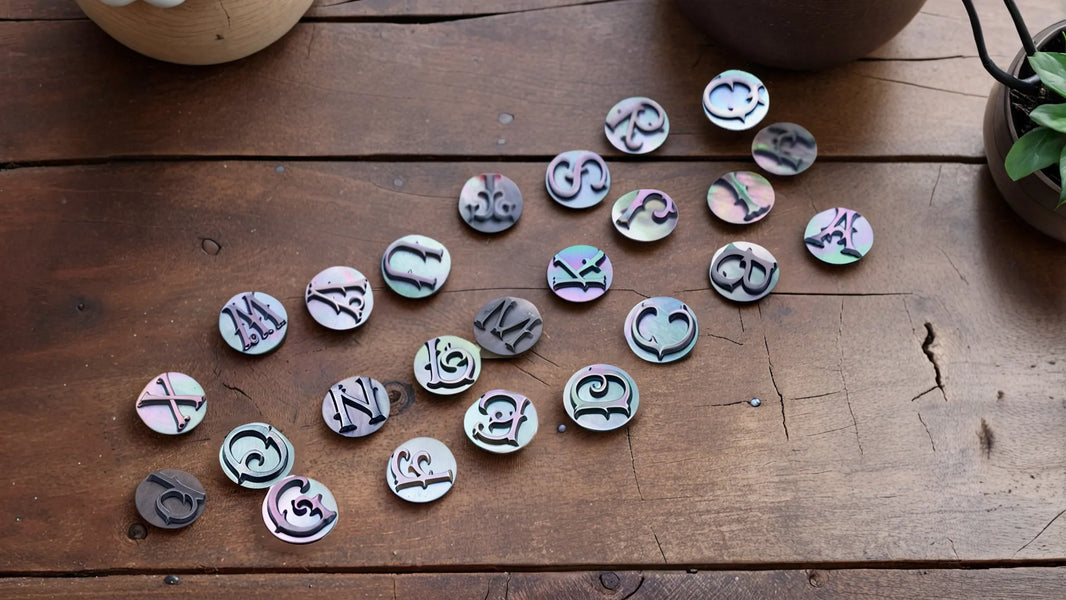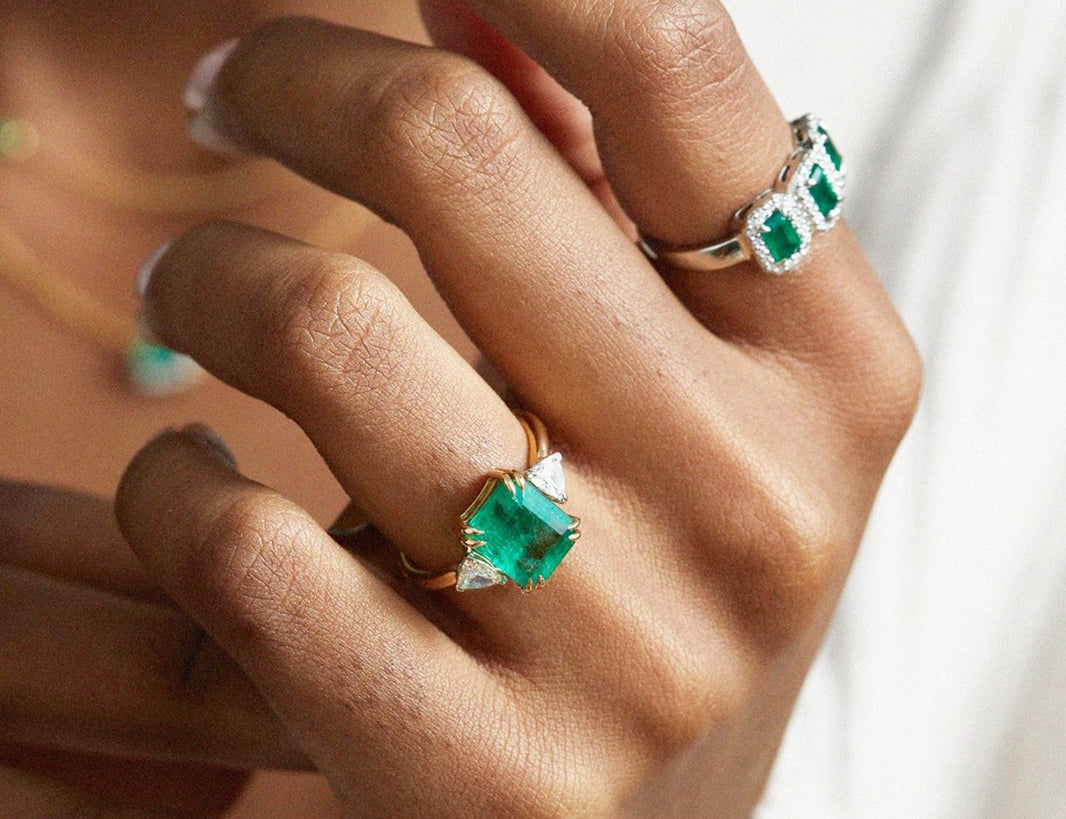Vintage isn’t nostalgia for its own sake; it is design language—geometry, metal, and light—shaped by history and worn into the present with purpose. As a collector and bench‑side observer who has examined countless heirlooms under a loupe and set modern stones into period‑correct mountings, I have watched a quiet revolution unfold. Couples want the romance of a bygone era paired with the ethics, technology, and value of today. Vintage style lab‑grown engagement rings are the elegant answer: authentic aesthetics, built for modern life, with stones that match mined diamonds in beauty and performance.
This guide distills what matters most, from period motifs and materials to lab‑grown fundamentals, buying strategies, care, and trade‑offs. Where expert sources diverge, I note the differences and explain why they occur, so you can make a confident, informed choice.
What Counts as “Vintage Style”—And Why Definitions Differ
In jewelry, “vintage” can mean age or aesthetic, which is why definitions vary. The International Gem Society notes that vintage may refer to pieces 20 years old or more, while Brides reports a 25‑year threshold. Those numbers aren’t a contradiction so much as a matter of practice: trade groups and educators often set broader benchmarks, while consumer publications track how terms are used in the marketplace. In daily shopping, most “vintage‑style” rings are newly crafted designs that faithfully reference older eras, which is what most couples actually want for durability and sizing flexibility. When you want a true older ring, jewelers and appraisers rely on hallmarks, construction methods, and wear patterns to determine age and origin, as explained by Argo & Lehne and Bryn Mawr’s hallmark guides.
Understanding the eras behind the look makes selection both easier and more meaningful. The notes below consolidate widely referenced stylistic cues from GIA, IGS, and specialist jewelers.
Era |
Core Motifs |
Typical Metals |
Stones & Settings |
Victorian |
Bows, hearts, navette silhouettes, clusters, halos |
Yellow or rose gold |
Old Mine and Old European cuts; pearls, turquoise; bypass rings |
Edwardian |
Lacy filigree, garlands, ribbons, floral lacework |
Platinum dominant |
Diamonds and pearls; airy, intricate openwork |
Art Deco |
Bold symmetry, step‑cut geometry, milgrain borders |
Platinum and white metals |
Asscher/emerald cuts; rubies, sapphires, emeralds; repeating patterns |
Retro (c. 1935–1950s) |
Sculptural curves, cylinders, scrolls, asymmetry |
Yellow and rose gold (platinum restricted in WWII) |
Illusion settings, star settings, baguette sides; large colored stones |
A brief nuance worth noting helps reconcile apparent contradictions in sources. Bryn Mawr highlights platinum’s strength and popularity in 1930s jewelry, while GIA emphasizes the wartime shift to gold in the 1940s and early 1950s due to platinum’s defense uses. Both are likely true within their time slices and regions: early‑to‑mid 1930s Art Deco was a platinum moment; the war and postwar years made gold practical and prevalent. Asking a seller to clarify the ring’s estimated date range and metal tests is a straightforward way to avoid confusion.

Why Pair Vintage Style with Lab‑Grown Diamonds?
Lab‑grown diamonds are real diamonds created by HPHT or CVD processes that replicate the conditions in which diamonds form. Diamondrensu explains that lab‑grown stones share the same chemical composition, hardness, and brilliance as mined diamonds and are graded by the same 4Cs framework. Retailers like Goodstone add that, to the unaided eye, they are visually indistinguishable from mined diamonds and require specialized equipment to tell apart; the practical difference is origin.
The benefits for a vintage‑style ring are compelling. Affordability lets you scale carat weight or elevate cut quality and craftsmanship in the setting. Ethical sourcing and the potential for a lighter environmental footprint resonate strongly with modern buyers, especially when makers disclose energy sources and production methods. A thoughtful caution is appropriate here: environmental claims vary by producer and power grid. If sustainability is central to your decision, ask the jeweler which lab grew the stone, how it was grown, and what energy mix supports production, then judge consistency across their answers. This small diligence step, suggested by best‑practice buying guides, aligns your values with facts.
Color and shape variety are another quiet advantage. Lab‑grown stones are available across traditional shapes—as well as antique‑inspired cuts—and in fancy hues such as yellow, pink, and blue at prices that make creative vintage palettes (think Deco sapphires with icy step‑cuts or a Retro‑warm rose gold with a champagne center) more attainable.

Hallmark Aesthetics: Getting the Look Right
The quickest path to “authentically vintage” is choosing a setting that follows period construction logic rather than simply adding filigree or milgrain as surface decoration. GIA’s Retro overview and IGS’s era guides offer reliable signposts, which I translate here into practical design choices for lab‑grown centers.
Sculptural Retro Warmth
Retro rings flow with bold, three‑dimensional forms, softened curves, and a confident presence. Yellow and rose gold dominated when platinum served wartime needs, and designers leaned on ingenuity: illusion settings and white‑gold frames that made modest center stones appear larger, star engravings holding side stones, baguette accents, and even invisible settings pioneered by maisons like Van Cleef & Arpels. Translating that into today’s lab‑grown build, consider a rosy alloy and a crisp white‑gold illusion bezel around a one‑carat center to deliver an outsized face‑up look without overspending. Rectangular step‑cut baguettes flanking the center instantly telegraph the period and temper the drama with precision.
A small overlooked reality is that many assume only platinum delivers “authentic” vintage credibility. While true for Edwardian and early Deco, GIA reminds us that much of 1940s Retro was engineered in gold, often with inventive alloying for hue. If you see a claimed 1940s design rendered exclusively in modern platinum without historical explanation, ask the jeweler why. Sometimes the answer is durability for daily wear, which is reasonable; other times it is simply a house preference. A side‑by‑side metal comparison under natural light helps you decide which you prefer.
Deco Geometry and the Platinum Sheen
Art Deco distills as order and contrast: crisp symmetry, stepped profiles, and tiny milgrain borders that catch light. Platinum or bright white gold harmonizes with asscher or emerald‑cut centers and saturated side stones like sapphires or rubies. For lab‑grown diamonds, pay heightened attention to cut precision. Step‑cuts celebrate transparency and pattern rather than sparkle alone, so light leakage or shallow corners will be visible. In my own loupe work, the most persuasive Deco recreations use a restrained pavilion depth and sharp corner integrity, then finish with a knife‑edge shank or architecturally spaced bead‑set side stones to keep the line work clean.
There is a minor tension in the literature around the affordability of colored gems in the 1930s. IGS notes that Depression‑era budgets often led to alternatives like amethyst, citrine, and glass, even as high jewelry favored rubies and sapphires. The discrepancy stems from audience and price tier: couture versus mainstream. If you are building a Deco look today, a lab‑grown diamond center with laboratory‑created sapphire accents gives you the couture palette at a friendly price, which neatly resolves the historical aesthetic with modern means.
Edwardian Lace and Air
Edwardian rings are feather‑light in appearance, heavy in craft. Platinum’s strength allowed lacy filigree, garlands, and floral openwork that read as ribbons of light on the hand. A lab‑grown round or cushion center framed by hand‑finished milgrain and a cloud of bead‑set melee captures the period. Just remember that dense micro‑pavé, while dazzling, raises maintenance demands. If daily wear is a priority, consider slightly larger bead‑set stones with solid rails or a fishtail pattern to preserve airiness without inviting frequent tightening. This is the kind of practical balance real‑world jewelers advise but many style guides gloss over.
Victorian Romance
Victorian looks embrace sentiment: halos, clusters, navette silhouettes, and colored stones, especially pearls and turquoise in the historical record. In a modern vintage‑style build, a lab‑grown round or old‑European‑style cut in yellow gold with a scalloped halo and a gently tapered shank feels faithful and flattering. If you love the pale bloom of pearls in antique imagery, emulate the softness with very fine milgrain and petite lab‑grown melee rather than actual pearls in the engagement setting, which are more delicate for daily wear.

Lab‑Grown vs. Natural: What Changes—And What Doesn’t
A lab‑grown center doesn’t change the fundamentals of performance or design logic. It does shift how you allocate budget and where you source assurance. This compact comparison keeps the decision grounded.
Consideration |
Lab‑Grown Diamond |
Natural Diamond |
Vintage‑Style Implications |
Composition & optics |
Same as mined; visually indistinguishable to the eye |
Same |
Cut quality and setting craftsmanship still drive beauty |
Origin |
HPHT or CVD processes in labs |
Geological formation |
Ask makers about growth method and disclosures if sustainability matters |
Price |
Typically lower for like‑for‑like grades |
Typically higher |
Reinvest savings into better cut or hand‑finished details |
Color range |
Broad, including fancy hues at accessible prices |
Fancy hues rarer, pricier |
Enables Deco palettes and Retro warmth economically |
Certification |
Independent lab reports available; retailers often cite IGI |
GIA and others for natural stones are common |
Insist on a reputable grading report either way |
Distinguishability |
Requires specialized equipment |
N/A |
Not a wearability concern; focus on design and durability |
A note on marketing language deserves careful handling. Some retailers claim lab‑grown stones have “fewer flaws.” As Diamondrensu and Goodstone emphasize different benefits, the most reliable approach is to treat clarity just as you would for a mined diamond: judge the stone in strong natural light and at 10× magnification, and favor clean tables and unobtrusive inclusions for step‑cuts. Growth method can influence inclusion types, but consistency is achieved by grading, not assumptions.
The Quiet Advantages—and Real Trade‑Offs
The upsides are practical and aesthetic. You can achieve period‑correct proportions, scale‑appropriate side stones like baguettes, and artisanal finishing without compromising center‑stone presence. You also align with ethical priorities when sellers are transparent about their supply chain, a point underscored by consumer guidance from Brides and buying tips across multiple jewelers.
Trade‑offs include uncertainty around long‑term resale trends for lab‑grown and the temptation to oversize a center beyond what the design supports. Vintage looks are sculpture first, gemstone second; when a center stone overwhelms the architecture, it stops reading as period‑authentic. If you are building a Deco halo, for example, a crisply cut one to two‑carat lab‑grown center with generous negative space may look more convincing—and frankly, more elegant—than a larger stone crammed into a border. When in doubt, trial on the hand is the arbiter.

How I Vet a Vintage‑Style Lab‑Grown Ring
Start with the era that resonates on the hand rather than on paper. A long, tapered finger can make a navette or marquise‑outlined Victorian cluster look ethereal; a broader hand may adore the confidence of a Retro ribbon form or a Deco square halo.
Once the silhouette is set, prioritize cut and proportion. For step‑cuts, seek symmetry and crisp corner integrity; for rounds and cushions, favor lively scintillation rather than just spread. In warm yellow or rose gold, a slightly higher color grade helps maintain apparent whiteness, while white metals can be more forgiving of near‑colorless grades. Clarity for step‑cuts usually benefits from moving a grade higher than you might for a brilliant cut, because their windows are honest.
Certification and disclosure come next. Ask for an independent lab grading report; many lab‑grown diamonds are documented by IGI. Insist on matching the inscription on the stone to the report while you have the ring in hand. Then evaluate the setting as if it were a small piece of architecture. GIA’s Retro guidance highlights illusion head construction; inspect the crispness of the edging that creates the “bigger look.” For filigree and milgrain, look for clean terminations and even beading, not muddy cast texture. Where pavé is involved, check stone seating, even spacing, and the security of prongs.
Durability and daily wear determine long‑term satisfaction. Bryn Mawr and CHAWI both warn that delicate filigree and full‑eternity shanks complicate resizing and may snag. If you lead a high‑activity life, consider a lower‑profile center, a protective bezel, and a shank with sizing space. Confirm resizing feasibility before purchase, and ask for the shop’s policy in writing; a responsible seller will be transparent, a red flag if they are evasive, as Brides cautions.
Finally, vendor credibility matters when buying anything labeled “vintage” or “vintage‑style.” Argo & Lehne’s primer on authenticity and Bryn Mawr’s hallmarking guide both stress the value of documentation, construction clues, and honest wear patterns. Even for a new vintage‑style ring, you want a maker who can explain the design choices and fabrication methods, not just the look.

Care, Maintenance, and Everyday Confidence
Vintage aesthetics thrive with simple, consistent care. Warm water, mild dish soap, and a soft brush keep diamonds brilliant; rinse thoroughly to banish soap residue from milgrain and under‑gallery spaces. Ultrasonic cleaning can be appropriate for solid, well‑built settings, but skip it for rings with very fine pavé or fragile enamel accents. White gold requires periodic rhodium replating if you prefer a bright white finish; yellow and rose gold develop a gentle patina that many owners find charming, a point antique specialists make frequently.
Build a habit of periodic checks. After the first month of daily wear, have a jeweler inspect prongs and pavé; early touch‑ups are far cheaper than lost stones. Remove the ring for heavy lifting and gritty chores. For travel, a small zip case and a mindful takeoff routine will save heartache. None of these guidelines are unique to lab‑grown diamonds—they are simply what preserve the beauty of finely made jewelry.
Budgeting and Value: Where to Spend, Where to Save
Value in a vintage‑style ring resides in the scholarliness of the design and the quality of the make. The price delta between lab‑grown and mined stones allows you to invest in the artisan elements that convince the eye: hand‑cut milgrain, properly undercut beads in pavé, true fishtail corners, and neatly fitted baguettes. A well‑cut lab‑grown center, a coherent period architecture, and a setting executed with care will outshine a larger stone in a generic mounting every time.
Couples drawn to true vintage should know, as Bryn Mawr notes, that older pieces can appreciate and make characterful heirlooms. For new vintage‑style rings, think of value in terms of daily delight and enduring design rather than speculative resale. That perspective keeps expectations aligned with reality and rewards the craft you will wear every day.

A Few Subtle Insights to Keep You Ahead
Some guides imply that platinum is the required metal for any “authentic” vintage look. GIA’s Retro research shows that the 1940s favored yellow and rose gold for practical reasons, and jewelers mixed gold colors within single pieces. If a seller insists all‑platinum is the only “correct” path for a 1940s design, they may be compressing decades of style into one material story. Ask to see the same design executed in warm gold; the right hue often makes the ring feel instantly period‑true.
There is also occasional disagreement on the age line for “vintage.” IGS uses 20 years; Brides uses 25. The cause is definitional and audience‑driven, not factual error. If you are verifying a “vintage” claim, bypass semantics: confirm date marks, maker’s marks, and construction details for older pieces; for new vintage‑style, focus on the integrity of design and fabrication.
Finally, sustainability claims for lab‑grown diamonds are broadly positive but not uniform. Diamondrensu emphasizes mining‑free origins and Goodstone foregrounds responsibility; both are directionally true. Because lab energy sources differ by region, the simplest validation is to ask for a written description of the production method and energy sourcing. When answers are specific and consistent, confidence rises; when they are vague, consider another vendor.
FAQ
Q: Are lab‑grown diamonds real diamonds for the purposes of vintage‑style rings? A: Yes. They are chemically and physically the same as mined diamonds and perform the same in vintage‑style mountings, as explained by Diamondrensu. The difference is origin.
Q: Which eras translate best into daily‑wear settings? A: Deco and Retro styles with structured bezels, baguette sides, and lower profiles tend to be the most practical. Edwardian lace can be durable when built by a careful maker, but fine pavé and airy filigree may require more frequent checks.
Q: How do I pick the right cut for a vintage look with a lab‑grown center? A: Match cut to era: asscher or emerald for Deco geometry, round or cushion for Edwardian, Old‑European‑style or round with scalloped halos for Victorian, and round or transitional with illusion heads and baguettes for Retro. For step‑cuts, prioritize precision and clarity; for brilliants, prioritize lively scintillation.
Q: What certifications should I look for with lab‑grown diamonds? A: Ask for an independent grading report and match its inscription to the stone. IGI reports are commonly cited for lab‑grown diamonds in retail.
Q: Will a lab‑grown center affect the longevity of the ring? A: No. Longevity depends on setting design and craftsmanship, not the diamond’s origin. Focus on sturdy prongs, thoughtful pavé execution, and resizing feasibility.
Q: How can I avoid replicas mislabeled as vintage? A: For true older pieces, use hallmarks, maker’s marks, and construction clues as Argo & Lehne and Bryn Mawr advise. For new vintage‑style rings, seek transparent makers who can explain the design’s historical references and fabrication.
Takeaway
Vintage style lab‑grown engagement rings deliver what modern couples quietly ask for: the poetry of history, the rigor of good making, and the clarity of ethical choice. Learn the eras, match cut and metal to the look, invest in craftsmanship, and anchor your decision with a solid grading report and a seller who answers questions plainly. Sources like GIA, the International Gem Society, and respected jewelers converge on the same truth I see at the bench: when design and execution are right, the ring on your hand feels timeless—regardless of when the diamond was born.
References
- https://4cs.gia.edu/en-us/blog/shop-antique-vintage-engagement-rings/
- https://bottomline.seattle.gov/?feed-stats-url=aHR0cHM6Ly93d3cudmFsZXJpZW1hZGlzb24uY29tLw%3D%3D&feed-stats-url-post-id=6796
- https://universe.byu.edu/metro/engagement-ring-trends-in-provo
- https://pressbooks.online.ucf.edu/inspire/part/top-5-hollywood-inspired-engagement-rings/
- https://www.gemsociety.org/article/vintage-engagement-rings/
- https://www.brides.com/vintage-engagement-rings-trend-explained-11814177
- https://www.nathanalanjewelers.com/lab-diamonds-vs-natural-diamonds
- https://www.diamondsfactory.com/engagement-rings/lab-diamond
- https://junebugweddings.com/wedding-blog/?p=819990
- https://www.miadonna.com/collections/lab-grown-diamond-engagement-rings?srsltid=AfmBOop_eEnqFNkCCLd_WtXTVzWs2K9ItD1sNWKGGl2fVhbOXTlT4pDT









